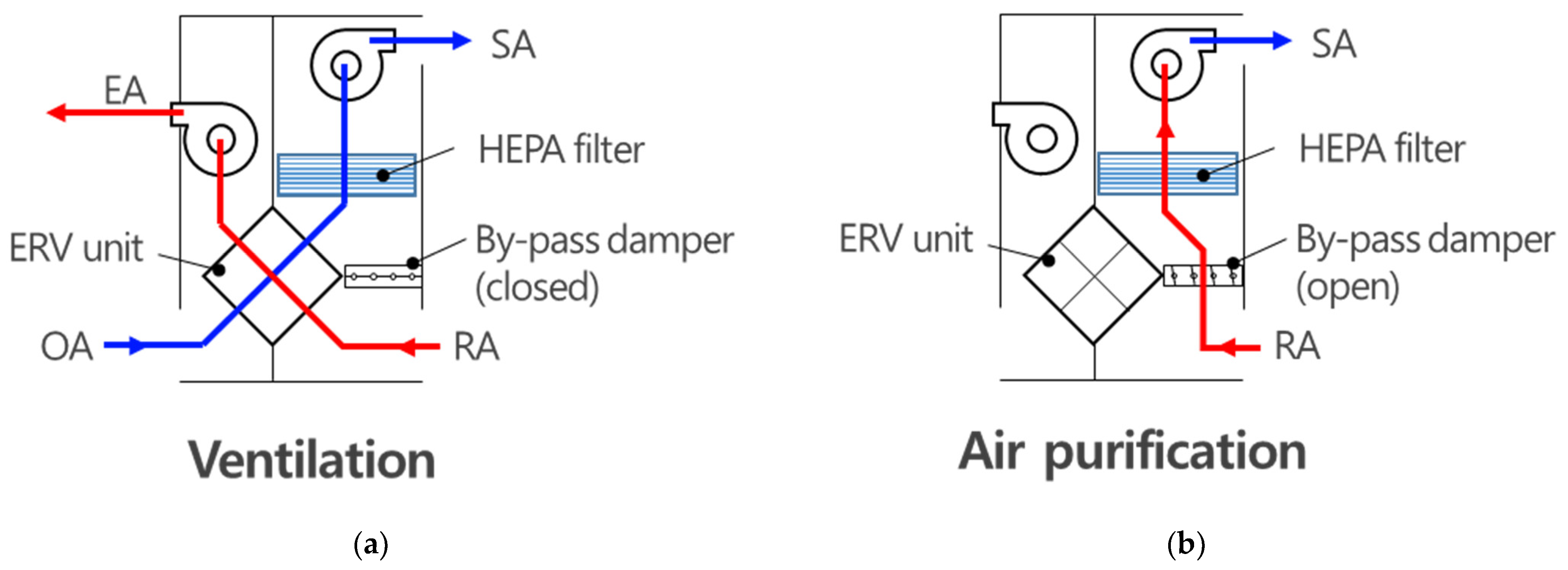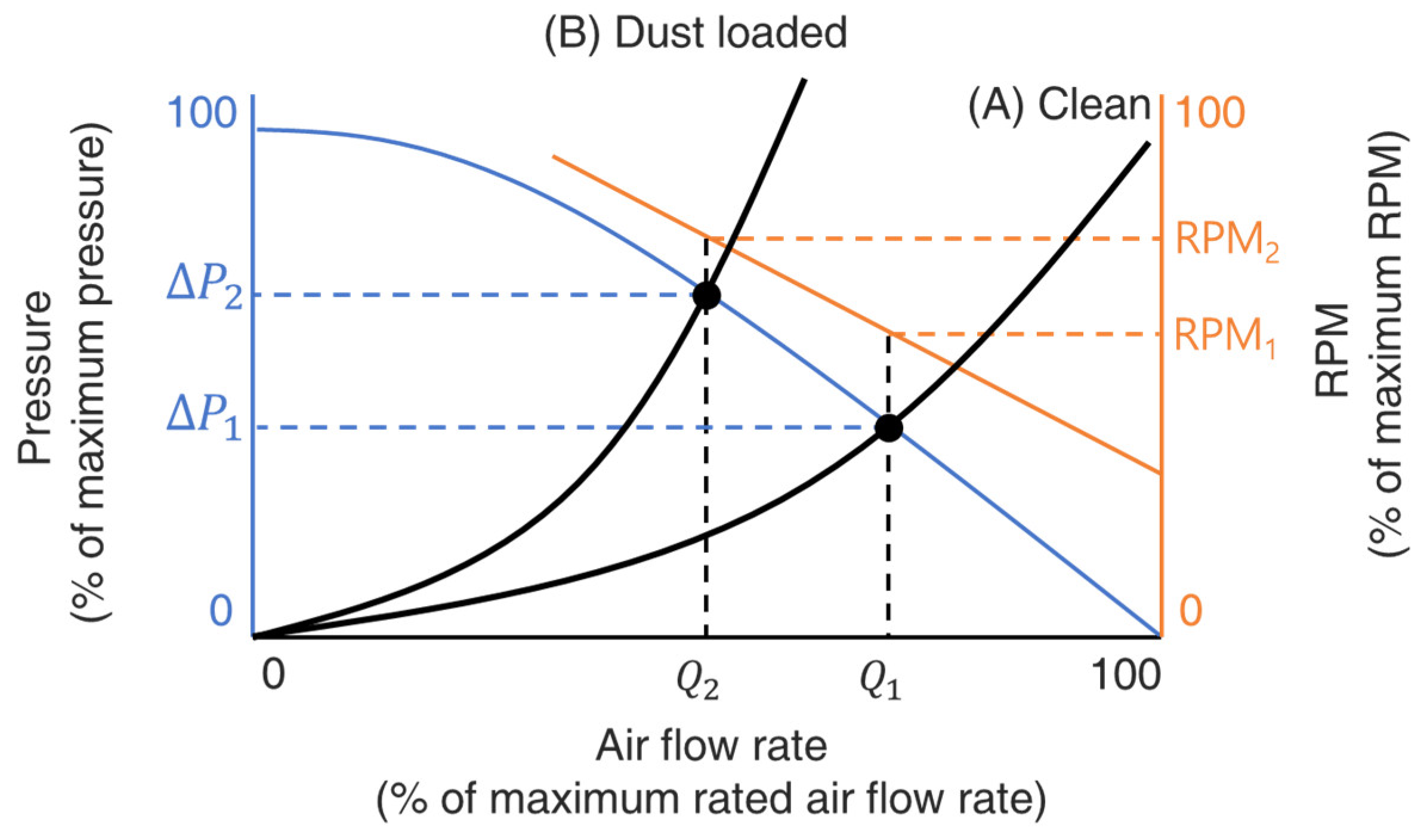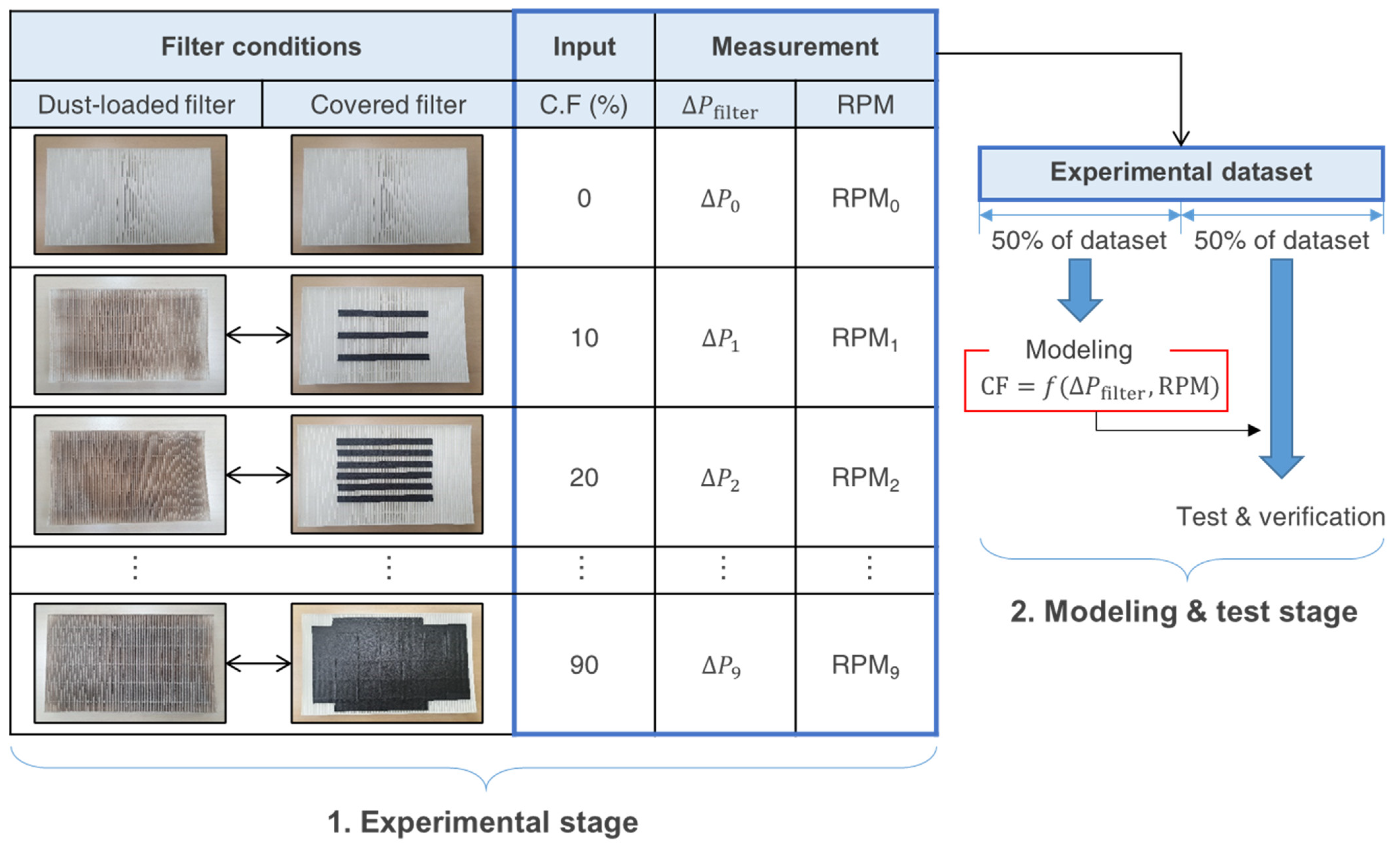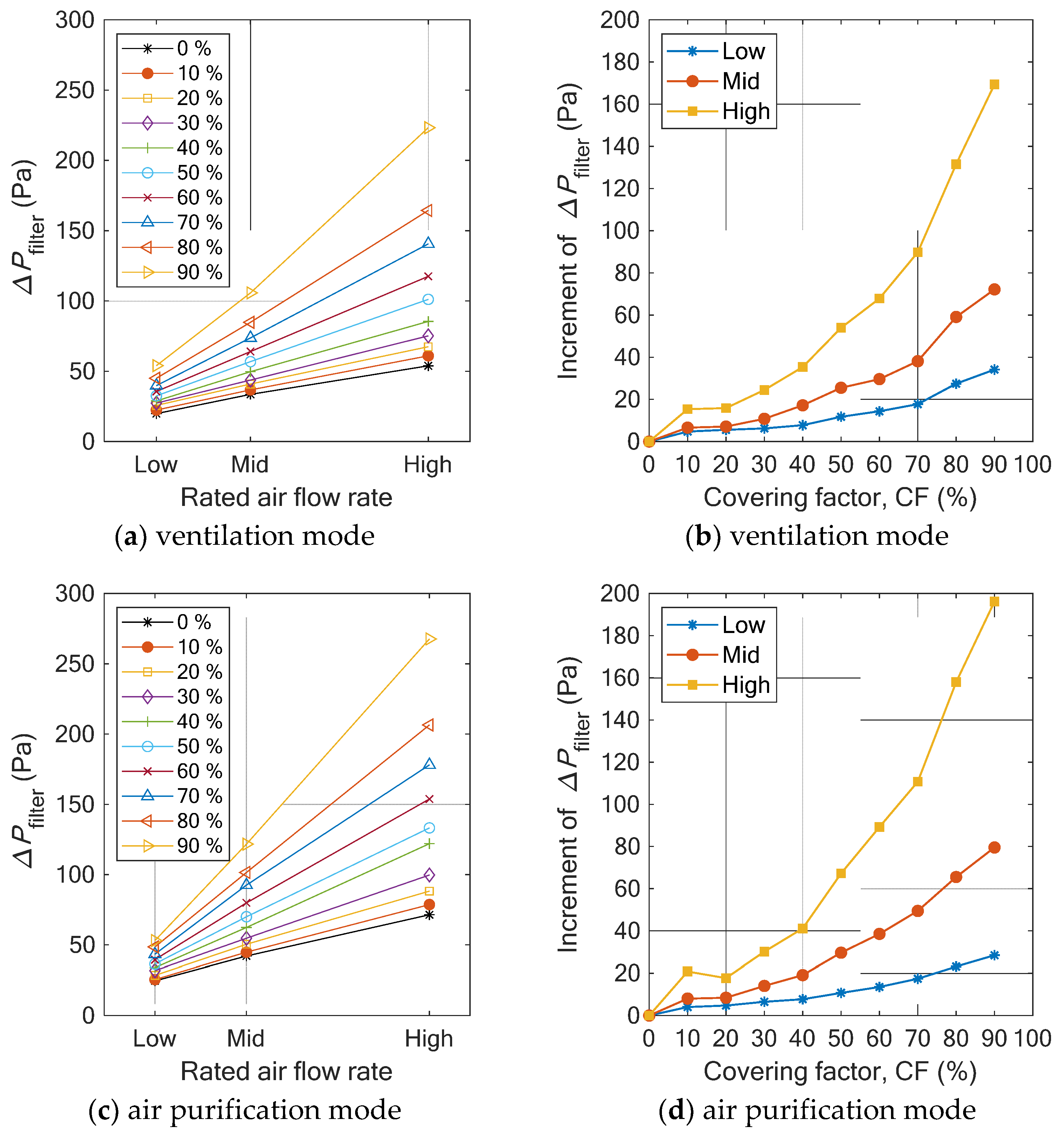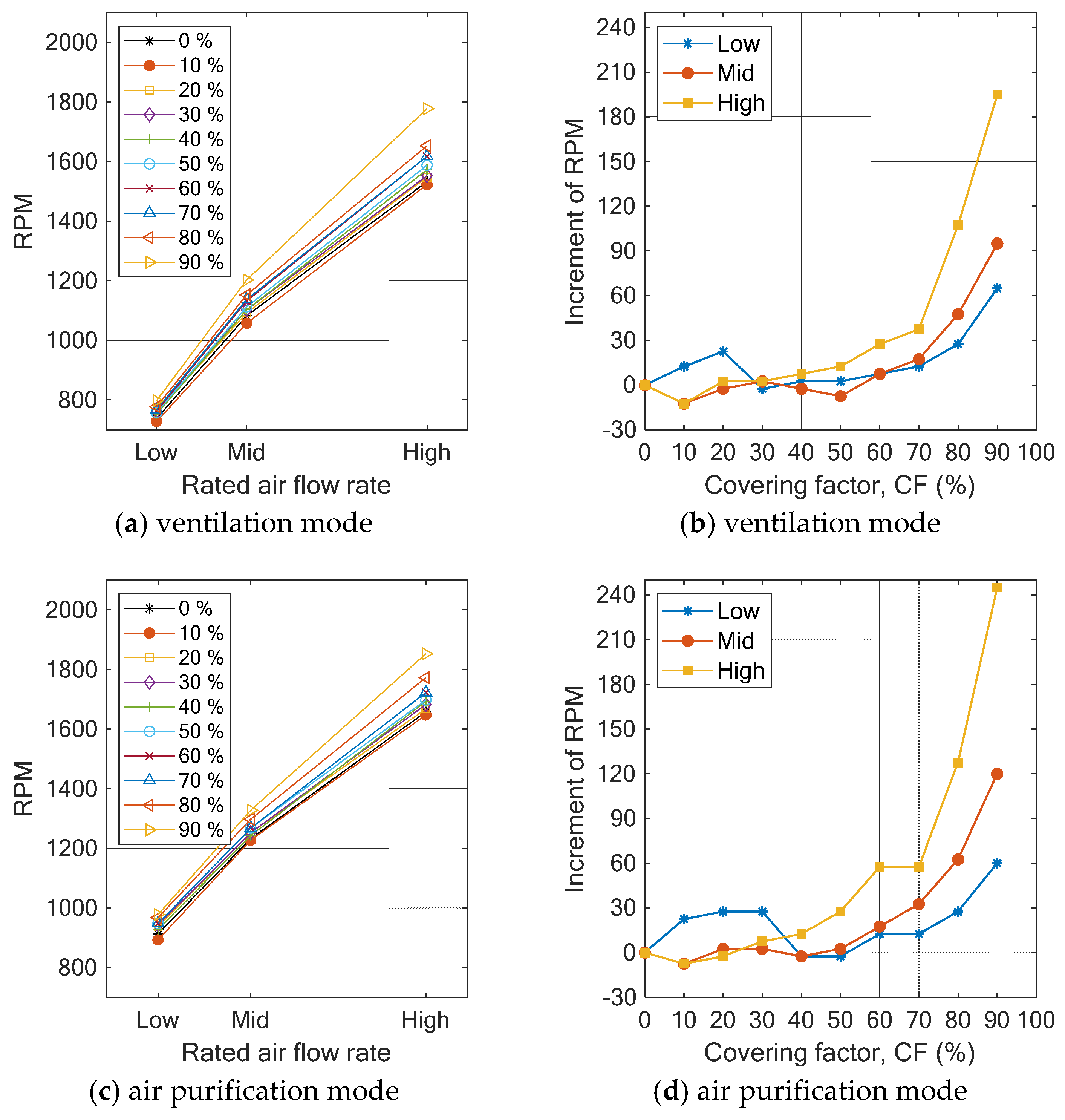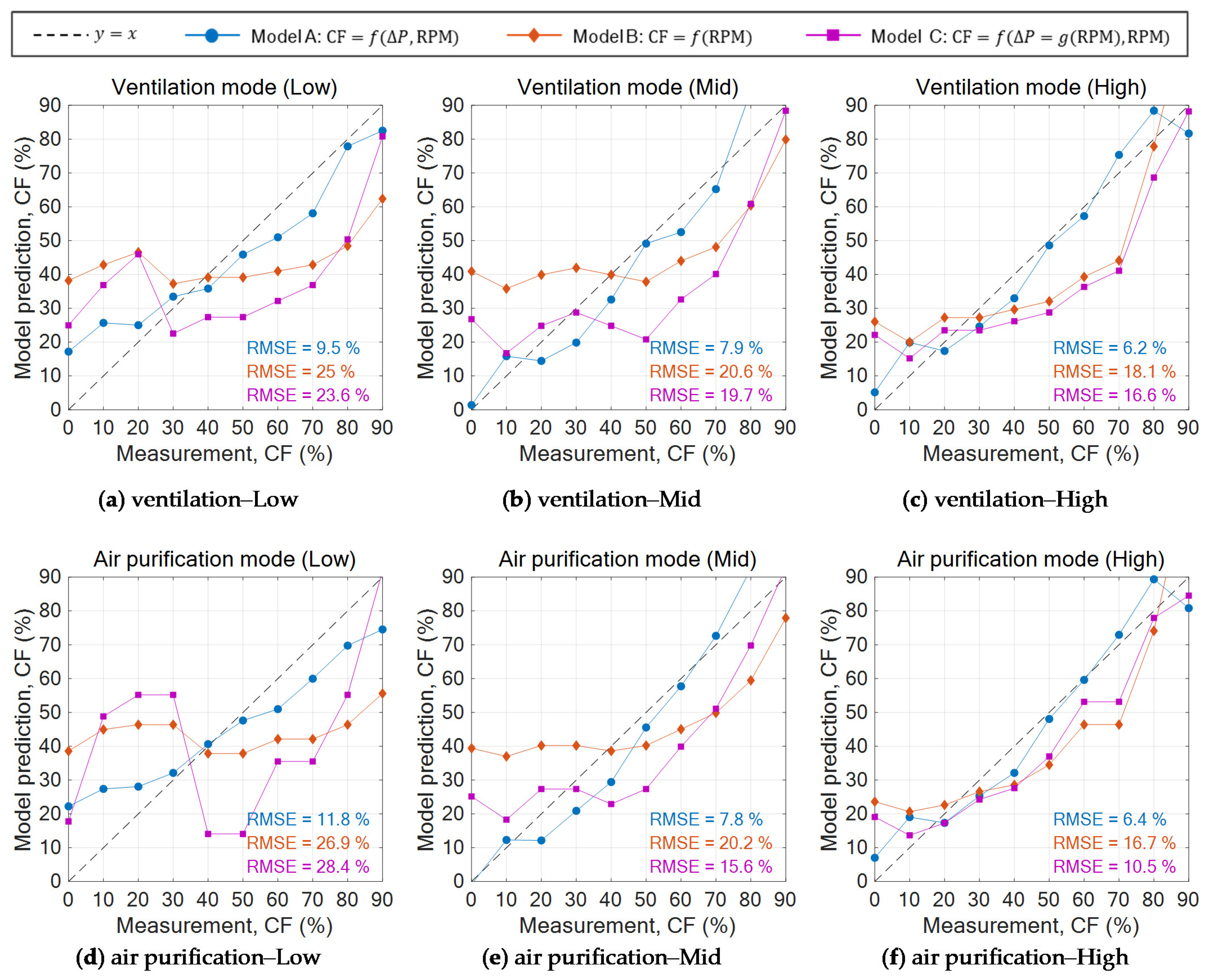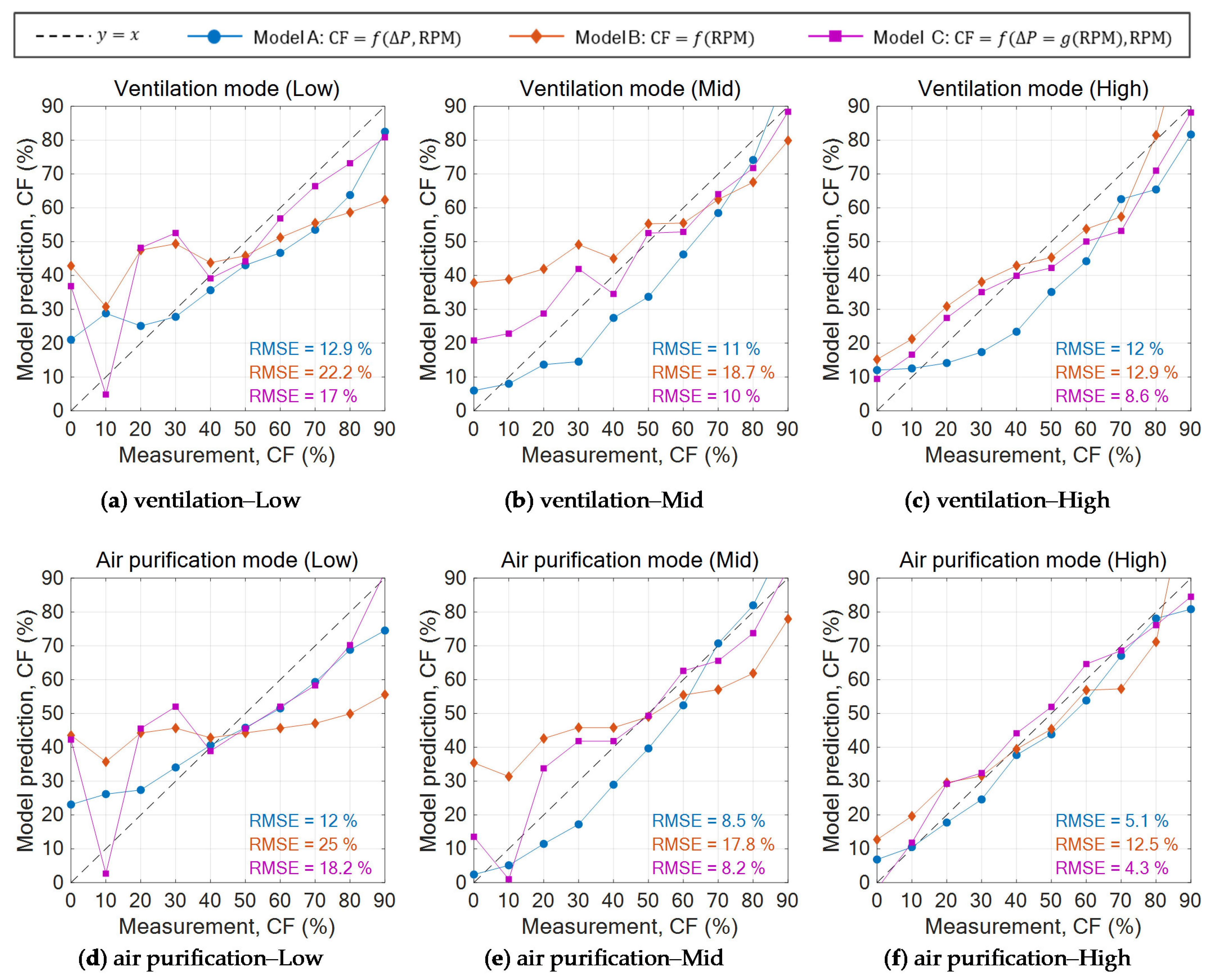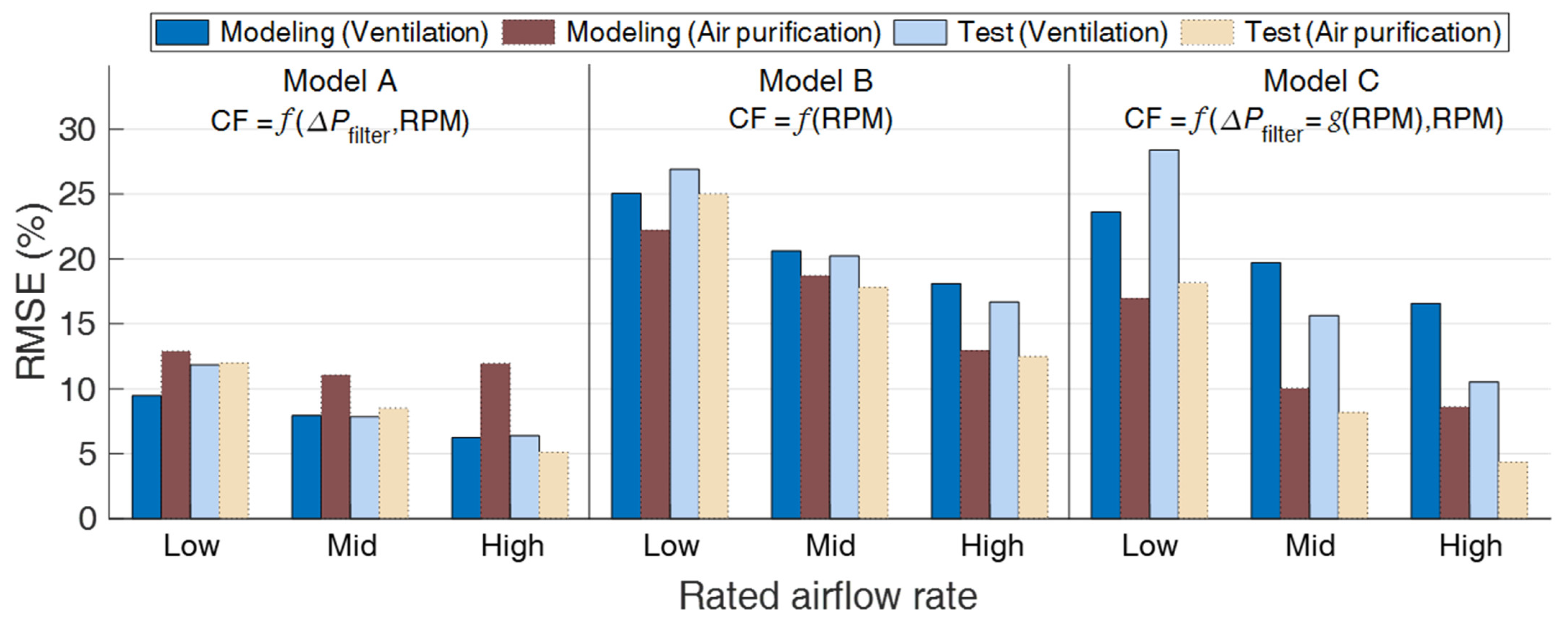3.1. Experimental Results
Figure 4 and
Figure 5 show the changes in the Δ
Pfilter and RPM with increasing CF.
Figure 4a–d and
Figure 5a–d show the data measured in the ventilation and air purification models, as shown in
Figure 1, respectively.
Figure 4a,c and
Figure 5a,c show the relationship between the Δ
Pfilter and CF in the ventilation and air purification modes, respectively, and
Figure 4b,d and
Figure 5b,d show the relationship between the RPM and CF. The
x-axis of each graph represents the VSP value of the SA fan, determined for each of the ventilation and air purification modes. In general, the VSP value was used to set the desired air flow rate by adjusting the RPM of the fan motor. Unless a fan motor control algorithm was used, the VSP would have produces a unique value for each rated air-flow rate.
While constructing a regression model, the changes in the measurements of the variables, caused by the increase in the air filter dust-loading level of the system should be clearly indicated. As shown in
Figure 4 and
Figure 5, the changes in Δ
Pfilter and RPM of the system, which occurred due to the changes in the CF, were more evident when the rated flow rate was “high” than when it was “low” and were more apparent in the air purification mode than in the ventilation mode; the latter is related to the flow path of the OA in the ERV unit. In the ventilation mode, OA passed through the duct and ERV unit since the ERV flow path opened to the outdoor atmosphere. Accordingly, the SA fan needed to cover the pressure drop that occurred when the outdoor airflow passed through the duct and ERV unit. Additionally, the flow path of the ERV unit in the air purification mode was a closed circuit, that only circulated indoor air, and the pressure drop occurred only in the HEPA filter. Accordingly, the change in the air purification mode was more pronounced than that in the ventilation mode. In addition, as shown in
Figure 4b,d and
Figure 5b,d, the increment of the Δ
Pfilter followed a gradual and clear increasing trend in the entire section. However, the increment in the RPM made it difficult to distinguish the rated air flow rates, based only on observing changes in the measured values for CF ≤ 50%. It was only valid for CF ≥ 70% and showed a rapidly increasing trend when the rated flow rate was “high”. This indicated that the mode of the rated air flow rate had to be determined in advance to obtain significant results when the RPM was used as an independent variable. Therefore, the VSP, which determines the rated air flow rate, was used as a categorical variable to distinguish the low, mid, and high rated air flow rates in all of the three models listed in
Table 3.
3.2. Test Results with the Proposed Regression Model
Table 4,
Table 5 and
Table 6 describe regression models that include either or all some of the following as input variables: VSP, Δ
Pfilter, and RPM as; and CF as the output variable. Since the flow path of the system was different for each operation mode, the results were presented separately for the ventilation and air purification modes and separately according to the rated air flow rates (low, mid, or high). Irrespective of the modes, the regression models for the filter dust-loading level estimation were classified as A, B, or C, according to the input variables that were used. Apart from the VSP, which was included in the models A, B, and C as a categorical variable, Δ
Pfilter and RPM were used as independent variables in model A, and RPM alone was used in models B and C, as summarized in
Table 4. For each model, Equations (2)–(5) were used. The ventilation and air purification modes were distinguished, and coefficients
a,
b, and
c as well as VSP were used, as summarized in
Table 5 and
Table 6.
Of the overall measured data of the regression models, 50% were used for modeling.
Figure 6 shows the fitting of the regression models for the data used in their construction. The
x-axis in each graph shows the actually measured CF value, and the
y-axis represents the estimated CF value derived using the regression model. RMSE stands for the root mean square error, which can be calculated using Equation (6). RMSE is the mean error between the CF values estimated by the model, and the actual CF values:
where
n is the number of datasets, CF
Prediction.i represents the prediction values by the regression models, and CF
Measurement.i represents the measured CF values. A lower RMSE value indicates a higher prediction accuracy of the model.
For all the models, i.e., A, B, and C, RMSE values were lower when the rated air flow rate was “high” than when it was “low”. Model A, which used ΔPfilter and RPM as input variables, exhibited lower RMSE values than models B and C. Model B, which used only RPM as an input variable, showed the highest RMSE value. Model C, which compensated for the absence of ΔPfilter with RPM, exhibited 0.9 to 1.5% lower RMSE values than model B.
Case A exhibited the highest prediction accuracy as it showed RMSE values close to 10%, even when the rated airflow rate was “low”. However, the model that was developed based on case A overestimated the predicted CF (%) when the measured CF was 0–30%, and it underestimated the predicted CF (%) as the measured CF became larger. These observations and the RMSE were reduced when the rated airflow rates were higher. Thus, the model must be implemented for an airflow rate with a high operation mode.
Figure 7 shows the predicted performances of the models listed in
Table 4 and presented in
Figure 6, using the remaining 50% of the measurement data that were not used during the construction of the regression models. As observed in
Figure 6, the model-prediction accuracy was higher when the rated airflow rate was “high” than when it was “low”; model A generally exhibited higher prediction accuracy than models B and C.
As shown in
Figure 6, the RMSE increased for model, A except in case (f); however, the RMSE decreased for both models B and C. In cases (b), (c), (e), and (f), the RMSE of model C was found to be lower than that of model A. In general, the prediction accuracy of a regression model increases with the number of input variables. The prediction accuracy for the verification data that were not used during the construction of the model was lower than that for the training data used during the construction of the model. However, the RMSE values of models B and C in the six cases, shown in
Figure 7, were lower than in the six cases represented in
Figure 6, and the RMSE of model C was lower than that of model A. This appears to be because the error was reduced by chance, considering that sufficient data were not used.
The RMSE values of models B and C, which used only RPM as a variable, were found to be lower in the air purification mode than in the ventilation mode. The RPM noises caused by the static-pressure difference between indoor and outdoor occurred in the ventilation mode because the flow path of the ERV system was connected to the outside through the OA duct. However, in the air purification mode, a stable RPM could be maintained, owing to the elimination of the RPM noises. That is because the flow path is independent of indoor and outdoor static-pressure differences in the air purification mode. Thus, the RMSE values of models B and C were lower in the air purification mode than in the ventilation mode. When dust-loading levels were estimated using only the RPM of the SA fan, a method to estimate the dust loading level of the air filter in the air purification mode was necessary to reduce the influence of static pressure fluctuations. Nevertheless, it is highly recommended that at least the Δ
Pfilter should be used as a variable to improve the accuracy of estimating the air filter dust loading, as seen from
Figure 8.
